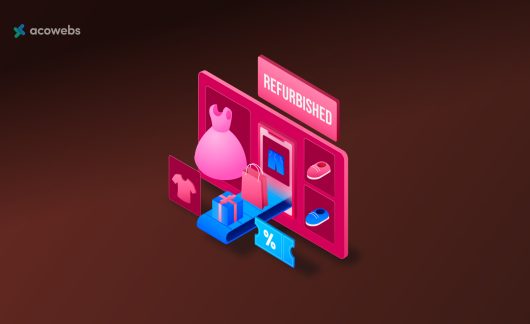The eCommerce business is on the rise and has already reached over US$ 26.7 trillion in global sales.
This evolution and increased adaptation of new technology and smart integration have created room for many players as many businesses find it easy and lucrative to run an eCommerce store.
Currently, there are small, medium- and large-size businesses online selling different commodities that people need.
This phenomenon has made the eCommerce space oversaturated, making it more challenging to attract more customers and make higher sales.
But how can you overcome the trend, whereby businesses are struggling to keep up with the competition and with the loss of customers to bigger eCommerce retailers? Start by conducting a competitor analysis.
In this ultimate guide, you will learn how to conduct an effective eCommerce competitor analysis, to give you an edge in the highly lucrative eCommerce industry.
What is eCommerce competitor analysis?
Competitor analysis is a technique that organizations or brands use to compare against other players in the industry on key components like websites, pricing, service offerings, marketing strategies, social media, etc.
It is a strategic research process, whereby businesses identify and evaluate the products, marketing, and growth strategy of the competition.
The analysis also entails a mix of qualitative and quantitative research to determine the strengths and weaknesses of your top competitors.
How well your business compares to your competitors on the mentioned fronts determines how competitive you are.
With this data, you can derive insights into the potential opportunities that your eCommerce business can act on, the strengths to leverage, and threats to be aware of.
You become more aware of what your competitors are doing and be able to make better decisions for your marketing strategy.
ALSO READ: Top 8 Social Media Strategies That Every E-commerce Store Needs To Implement
The benefits of conducting competitor analysis

Whether a B2C, B2B, or C2C business, conducting market research on your competitors comes with multiple benefits, including:
Understand differentiating capabilities
When you collect data and understand how your competitors are conducting their product, marketing, and growth strategy you are able to understand how your business is doing or can do better on these parameters.
When customers seek to buy from your business, you can identify areas of strength that you can leverage to stay ahead of the competition.
Competitor analysis challenges you to become better, faster, cheaper, and different in your service offering.
A more effective and strategic sales approach
A market research analysis is a reliable way to determine what your competition is doing that is keeping customers from visiting your eCommerce store.
Your competitors’ offering could be low-cost, high quality, or high-tech, or the differentiating factor could be speedy delivery and great customer service.
Either way, you will be in a better position to understand your competitors’ marketing approach, and to develop and deploy a more effective and tactical sales approach that will bring you more sales.
For instance, if you learn that your competition is doing really well in offering high-quality products, you can train your sales staff to educate new leads on your company’s position on quality control, while showing them results to prove that your products can provide high-quality solutions even better than the competition.
Increased revenue
When you conduct regular competitor analysis, you change your organization’s internal operations to stay in tune with what is trending in the market and what customers need.
It is a way of making your brand known to customers as being authentic, reliable, and customer-centric because you will have mastered the parameters that attract customers most.
Even so, you should not concentrate too much on what the competition is doing to an extent that you lose your uniqueness and focus.
Instead, you should utilize the results from the competitor analyses to make what you already have better on one or more of the researched differentiating aspects of price, quality, or customer service.
This practice will enable you to attract and retain more customers, leading to higher sales revenues.
With the global Retail eCommerce sales projected to reach $6.38 trillion by 2024, now is the time to take strategic action to become better than your competitors.
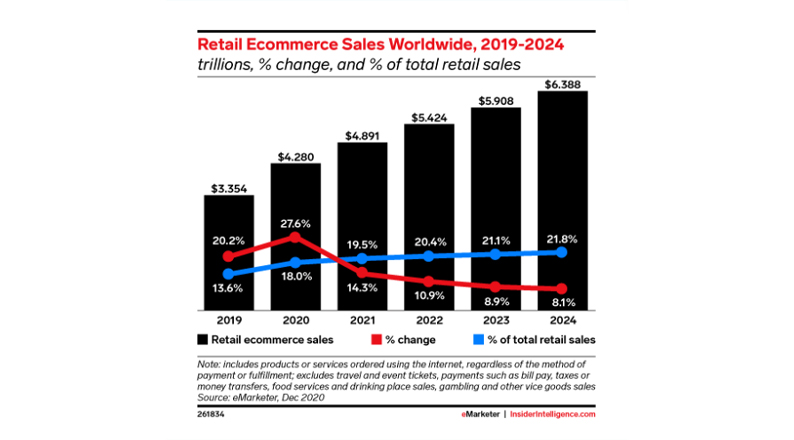
ALSO READ: E-Commerce Buyer Persona: A Complete Guide
Ultimate guide to eCommerce competitor analysis
Before conducting competitor analysis, you should start by creating a checklist of the various aspects that you’ll research and develop.
There are many factors to look into, but this guide will direct you into identifying the most impactful and insightful ones to keep your business successful.
Select competitor analysis tools and systems

Start conducting your eCommerce competitor analysis by selecting one or two tools that you can use to gather information about your competitors.
Google is a good resource because you can use the search engine to search for insights, using keywords being used by customers within your niche.
Tools like Google AdWords Keyword Planner will help you identify keyword ideas being used by the highest number of people interested in the products and services sold by you and the competition.
Google Trends is also an effective tool for studying the market because it shows people’s search interest for certain keywords across geographical regions. However, if you need to analyze a large number of keywords, for this you will not manually search and then copy & paste the trending results. There are various ways to automate this process, such as using the Google Trends API which does the job for you.
The data collected informs you of the type or quality of products and services customers want.
To compare your performance data with that of the competition, use the Google Analytics tool.
The data collected using the tool will give you an idea of what is happening to businesses within your niche, such as where you should place more focus, how your competition is performing, and issues you should address.
You can also conduct competitor analysis of the top 5 competitors’ social media marketing strategies.
Check their websites to identify the social media pages they use frequently, and use tools like Sprout Social Facebook Competitor Report to collect data.
For instance, you can gather info on the number of messages, types of content (images, text, or videos), and engagement or amount of messages received from followers.
Other platforms for data collection and competitor analysis are YouTube, Quora, and SimilarWeb.
Identify your competitors
Use the selected tool to search for terms or ideas customers are using to reach your competitors. The goal is to identify and note down your main competitors.
For instance, you can Google search for the keywords that many consumers use to find your business. If you sell clothes or software, Google terms like “men’s official wear” or “human resource training software.”
The Google search results show that Lessonly and SkyPrep are among the leading competitors when it comes to providing HR training software and tools.
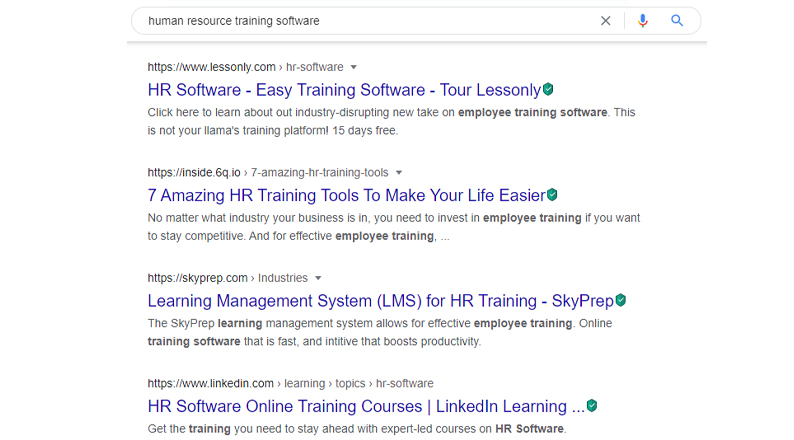
The first page of Google will show you your key competitors who are selling the same products or services that you do.
Always disregard large online marketplaces like Amazon, while focusing on businesses within your industry.
Unless your business is an established large-size company, you might not want to gauge yourself against market leaders and challengers as these brands already hold a large market share, and they have a strong brand presence and high marketing budgets giving them powerful competitive advantages.
Instead, you can gauge yourself against market followers, a category for successful businesses, but which follow the trend established by market leaders and challengers.
You could also be a market nicher, comparing your business against other small-sector eCommerce outlets or a particular target audience.
You should also use the search tools on Facebook, YouTube, and Quora to understand what people are talking about, sharing, and engaging with that is related to your product or service offering.
For instance, if you search for “outdoor holiday equipment” on Quora, you will find that many people are talking about outdoor holiday lighting and refrigeration equipment.

Such results should tell you that your main competition is eCommerce businesses selling the two-holiday tools, enabling you to design and deploy marketing strategies targeting buyers of such products.
ALSO READ: Using Personalization On Your Online Store To Enhance Customer Experience
Determine their product offering
Once you have compiled a list of all your competitors from multiple channels, visit their websites to analyze the products and services they offer.
The main competitive assessment comprises four components: website competitor audit, competitor product or service analysis, competitive pricing analysis, and marketing competitor audit.
Some of the aspects to consider when performing the analysis include:
- The depth of the competitors’ product descriptions
- What products do they lack compared to yours?
- How many of their products and services are similar to yours?
- Are there any of the competitors’ product features lacking in yours?
- What is their product pricing compared to yours?
- Do they run offers or discounts?
- How and where is the placement of call-to-action (CTA) text and button?
- How fast are their web-page loading speeds?
- How many blogs do they post per month?
Throughout these processes, you should determine your competition’s point of product differentiation.
Create a table with answers to all the questions relevant to your eCommerce competitor analysis.
The products analysis process will enable you to determine how you should present and market your products and services, and areas to improve on.
It is also a great way of gaining insights into green scopes within your industry.
Analyze the marketing strategy
Part of the eCommerce competitor analysis requires that you understand what other businesses in your industry are doing to gain and retain new leads, web visitors, and social media followers.
Conduct an analysis of the competitors’ content strategy with the goal of either increasing your site traffic, improving search engine optimization (SEO), increasing leads and sales revenue or enhancing brand awareness and visibility.
You can also go the extra mile and subscribe to your competitors’ newsletters or blogs to get regular updates on new products or processes.
You can follow them on social media or even buy one of their products to assess how they manage the checkout process and customer-retention strategies.
Compare how your competitors’ are performing on these metrics, and take action to improve how often, widely, and effectively you share content about your brand and products.
Remember to keep your content quality depending on the platform you use to market your products while retaining originality to avoid losing your existing customers.
Use tools like key performance indicators (KPIs) to gauge how to set targets and measure your performance periodically.
SimilarWeb will keep you informed of the number of visitors your competitors’ websites are getting, information that can help you implement strategies to improve the quality and reach of your content.
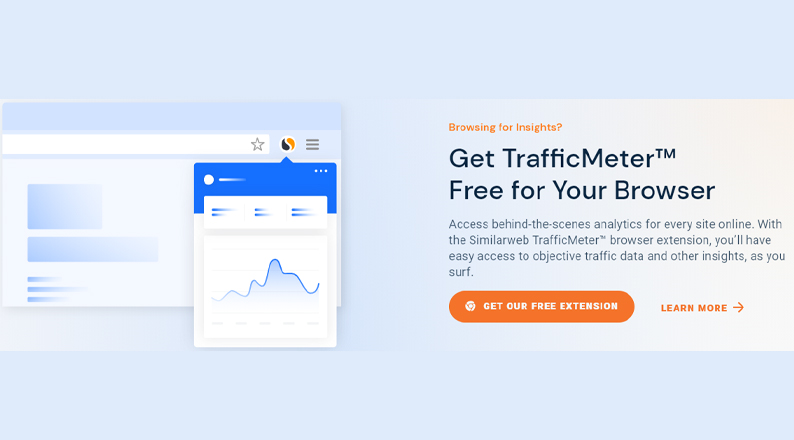
Depending on the tool you are using to perform the analytics, you can also tell if the traffic is paid or organic. Ahrefs is a good tool for digging deeper into competitor SEO strategies, and there are some cheaper Ahrefs alternatives available like SE Ranking or Mangools too if you’re on a budget.
This information will enable you to organize how best to reach a given target market through Google Ads or other marketing tools.
ALSO READ: Tips to use content marketing for eCommerce sales
Analyze the social media presence
Social media ads are a great source of direct traffic and sales, making it important to analyze the number of likes and shares your competitors are getting on Facebook, Twitter, Pinterest, YouTube, etc.
Brands use social media to attract new customers, as well as to retarget customers who have visited the website but left without making a purchase.
Uber uses the strategy in its eCommerce competitor analysis strategy to attract customers. The ads help create a sense of familiarity with the brand, while directing new users towards the company’s rider app.

Once you learn the social media platforms mostly used by your competitors, design strategies to market and reach customers through these channels.
Entice customers with offers and discounts relating to your products with the goal of enhancing your organization’s strengths relative to the competition.
Understand your competitors’ growth strategy
Your competitors’ brand positioning, and content, and social media strategy will inform you of their overall marketing strategy.
In addition, you should also study and understand the competition’s growth strategy by following their newsletters, publications, and PR statements.
The number of social media followers will also tell you how fast your competitors are growing over a given period of time. Use these metrics to set targets for your brand growth and expansion.
Conduct a competitor SWOT analysis
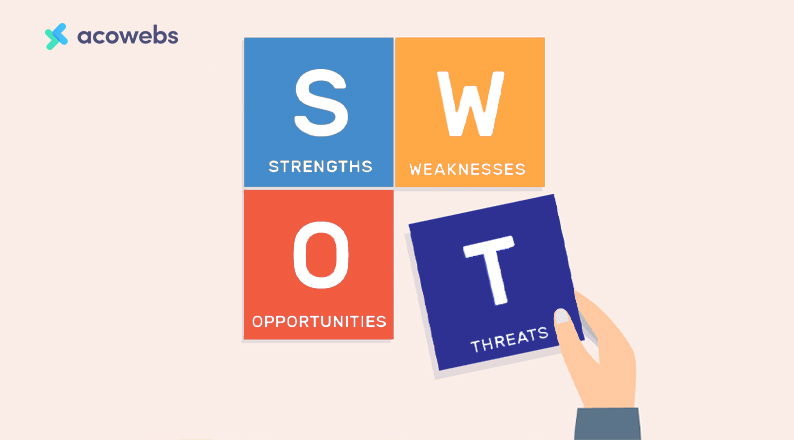
Now that you understand all your competitors comprehensively, your next step is to conduct a SWOT analysis on each of the competitors
The goal of this process is to identify and build on the identified strengths, minimize your weaknesses, take advantage of opportunities, and try to mitigate external threats.
The factors to examine are your competitors’:
- Strengths – the aspects or areas your competitors are good at.
- Weaknesses – the areas that your competitors are performing poorly or things they are doing the wrong way.
- Opportunities – the aspects created by your competitors, which you can exploit or gaps you can take advantage of.
- Threats – the threat your competitors pose to your eCommerce business.
Following the findings of your eCommerce analysis, you can decide to reinforce strengths like faster or cheaper shipping, lower product or service pricing, retargeting of customers via social media, or improving your SEO.
Addressing weaknesses like high operating costs and poor brand positioning can help improve your competitive advantage while taking advantage of a marketing strategy not exploited by the competitors, such as running a blog post can help improve your SEO and web traffic.
Other opportunities, such as click and collect (allowing customers to collect items bought online in your brick-and-mortar store) or going mobile (shopping through a mobile app) can also increase your eCommerce competitiveness.
Low barriers to entry or new regulations can be a threat to your eCommerce business.
You should assess how these threats can affect your overall product pricing, marketing strategy, and growth.
Once you identify the threats, work on your customer retention strategies to minimize the impact of new changes to your lead generation and traffic flow, sales volumes, and the bottom line.
ALSO READ: A complete guide to eCommerce referral marketing
Create a competitor analysis model
A competitor analysis framework is a pictorial presentation of the information you will have gathered regarding your competitors’ business operations.
The model enables you to report your findings in a presentable manner, easily review and update them, and share it with your marketing team.
You can prepare a framework similar to the figure below using visual analytics tools like Excel, Google Docs, or ChartExpo..
The chart will enable you to fully understand your market trends, identify your competitors, evaluate your opportunities, analyze your threats, and adjust your brand positioning and content and social media marketing strategies accordingly.
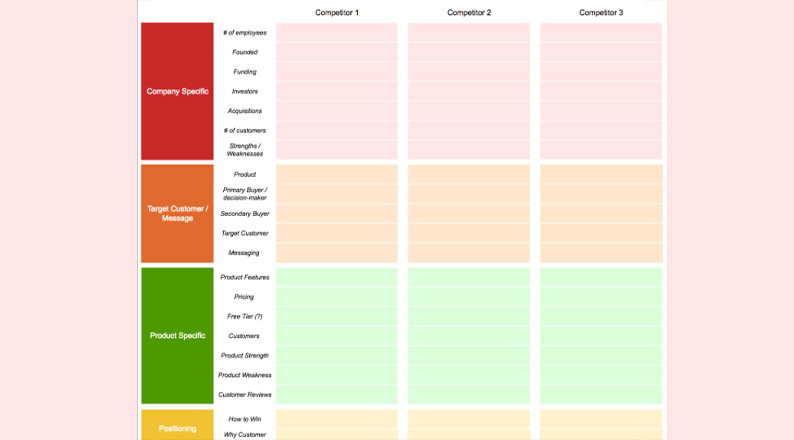
Conclusion
Organizations use competitor analysis to compare against other players in the industry on key components like websites, pricing, service offerings, marketing strategies, social media, and others.
Effective eCommerce competitor analysis will enable you to understand the differentiating capabilities of other businesses within your niche and industry, in order to build a more effective and strategic sales approach while increasing your revenue.
This ultimate guide to eCommerce competitor analysis shows you how to select competitor analysis tools and systems, identify your competitors, determine their product offering, analyze their marketing strategy and social media presence, and understand their growth strategy.
You should also conduct a competitor SWOT analysis to identify and evaluate the strengths, weaknesses, opportunities, and threats presented by your competitors.
Ensure to present your findings in the competitor analysis framework for easy review, update, and sharing with your marketing team.
Acowebs are developers of WooCommerce plugins that will help you personalize your stores. It supports the additional option with feature-rich add-ons which are WooCommerce Product Addons, that are lightweight and fast. Update your store with these add-ons and enjoy a hassle-free experience












 Login
Login
 Cart
Cart







